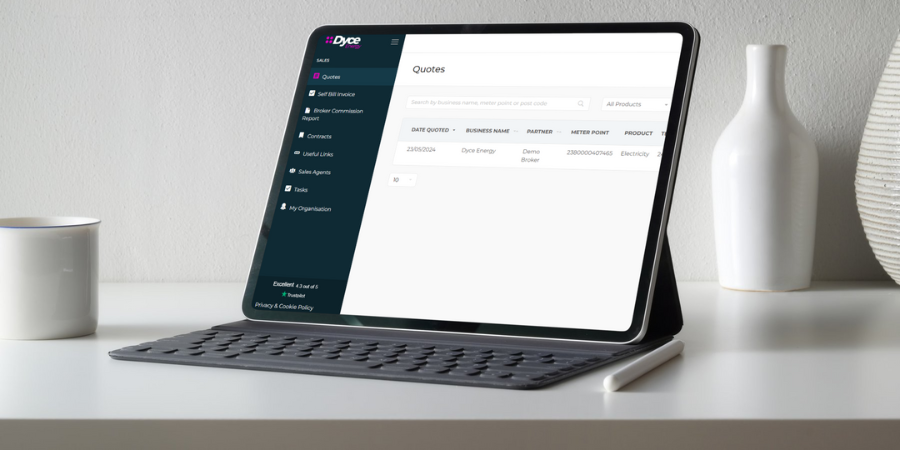The Radio Teleswitch Service switch-off

Energy suppliers and wider stakeholders have committed to working alongside each other to replace 800,000 Radio Teleswitch service (RTS) meters across the UK before the service is turned off this summer. But what are Radio Teleswitch Service (RTS) meters, who will these changes affect, what is the timescale for these changes, and will you need a new meter? We will be discussing all the above and more in this piece.
Understanding the Market-Wide Half-Hourly Settlement (MHHS) and Its Impact on UK Businesses

The UK’s energy landscape is changing with the implementation of the Market-Wide Half-Hourly Settlement (MHHS), an initiative led by Ofgem to enhance the accuracy of electricity billing and promote a more efficient energy usage. This will bring significant changes to how businesses manage and are charged for their electricity consumption. But what does this mean for businesses, and why is it important?
Embracing Growth: National Learning at Work Week

National Learning At Work Week Is Upon Us! We’re Thrilled To Embark On A Journey Of Growth, Development, And Empowerment Within Our Workplace. This Week Is A Testament To Our Commitment To Fostering A Culture Of Continuous Learning And Innovation. Check Out What The Team At Dyce Have Been Doing TO Further Their Learning.
Mental Health Champion – Matt Cooke

Mental Health Issues Can Affect One In Four People At Some Point Of Their Lives, This Is A Major Cause Of Long-Term Absence From Work.
Here At Dyce Energy We Actively Promote Good Mental Health And Provide Support To Our Employees Through Our Mental Health Champions. Introducing Our Digital Development Manager, Matt Cooke!
Mental Health Champion – Celia Adams

Mental Health Issues Can Affect One In Four People At Some Point Of Their Lives, This Is A Major Cause Of Long-Term Absence From Work.
Here At Dyce Energy We Actively Promote Good Mental Health And Provide Support To Our Employees Through Our Mental Health Champions. Introducing Our Sales Admin Team Leader, Celia Adams!
Mental Health Champion – Dan Bennett

Mental Health Issues Can Affect One In Four People At Some Point Of Their Lives, This Is A Major Cause Of Long-Term Absence From Work.
Here At Dyce Energy We Actively Promote Good Mental Health And Provide Support To Our Employees Through Our Mental Health Champions. Introducing Our Sales Manager, Dan Bennett!
International Women’s Day 2024

We Are A Firm Believer That Being A Great Leader Comes Down To Personality, Commitment, Perseverance, Hard Work And Attitude – Gender Plays No Part In The Attributes That Are Desired From Our Staff & Business. To Celebrate International Women’s Day 2024, We Spoke To Carrianne, HR & Finance Manager, To See What It’s Like Working For Dyce Energy.
Same Service, Difference Face

As We Reflect On A Truly Remarkable Year Of Growth, We Realised The Need To Distinguish Ourselves In The Competitive Energy Sector. This Realisation Has Led Us To Today. Dyce Energy Is Thrilled To Announce A Significant Milestone In Our Journey – A Bold And Vibrant Rebranding Initiative. Exciting Times Lie Ahead For Dyce Energy, And We’re Thrilled To Have You With Us On This Journey Of Growth And Positive Change.
Dyce Energy Launch Partner Portal

On The 1st October 2019, After Several Months Of Development And Testing, We’re Pleased To Unveil Our New Partner Portal, A System Which Is Dedicated To Our Partners And Their Customers. The Partner Portal Enables Our Partners To Access Energy Tariff’s, Provide Quotes, Create Contract Documents And Submit Accepted Contracts With Just A Few Simple Clicks.
Energy At Your Fingertips

We’ve Been Patiently Waiting, And It’s Finally Here, The Dyce Energy Smartphone App! You Can Now Check Your Bills, Usage And Balance For Your Business Energy From Your Phone. We’ve Even Made The Meter Reads Process Smoother By Adding An Option To Submit From Your Phone And You’ll Even Receive A Handy Reminder To Submit Reads. The App Has All The Benefits Of Our Online Portal, Condensed Into A Simple App.


